We perform on-site thermographic surveys and measure various structural characteristics such as air tightness, air change rate, thermal transmittance (U-value) of windows, and other structural elements. We provide gas monitoring and thermal comfort analysis.
We have 20+ years of experience in testing thermal properties of building materials and buildings using both our original and standardized methods and equipment. We have carried out European-scale and local projects such as the ERDF project: Development, optimisation, and sustainability research of smart solutions for near-zero energy buildings in real climate conditions and INPATH-TES: Development of lecture courses on building physics and thermal energy storage materials.
Thermographic Survey
We perform various types of thermographic surveys for buildings, electrical installations, machinery, furnaces etc. according to the LVS EN 13187 and ISO 18436-7 standards, using high-resolution infrared camera FLIR T650sc with high-temperature measurement accuracy, and quality. Camera characteristics: 7.5-13.0 μm spectral range; 640 × 480 px resolution ; noise level NETD < 20 mK; the range of temperature measurements is from -40 °C to 2000 °C with is ± 1 °C, ± 1% precision.
Airtightness of Buildings (q50)
We perform the standardized “Blower door” airtightness (permeability) q50 (m3/m2/h), n50 (m3/m2/h) tests for buildings with airflow up to 42000 m3/h. Measurements are performed using a system of three high-power fans Retrotec 3300 with an additional external air pressure compensator. Maximum airflow generated by the equipment at 50 Pa is 42000 m3/h; flow rate accuracy is ± 3%; maximum door width is 120 cm.
Building Actual Air Change Rate (n, n50)
We perform long-term (multi-week) room air change rate measurements using the tracer gas method. For measurements, we use a gas analyser with a multipoint sampling device INNOVA 1412 i/1303. The measurement is based on injecting a selected tracer/control gas into a room and recording gas concentration over time using the photoacoustic infrared method.
Heat Transfer Coefficient (U)
We perform heat transfer coefficient U [W/(m2K )] measurements for building insulation envelopes in field conditions (during the heating season). We use portable (wired and wireless) measurement systems for local determination of heat transfer coefficient U, also known as the U-value, using – GreenTEG gO with the cellular network connection. We measure with a 1s to 1h frequency. The total duration of measurements is not limited.
We use combined heat-flow/surface-temperature sensors with temperature measurement precision ± 0.1 °C, heat flow measurement precision is ± 3% W/m2, combined humidity and temperature sensors with a measurement precision of ± 0.3 °C and ± 2% for relative humidity.
Heat Transfer Coefficient (Ug) of Glass Panes
We offer fast measurements of the heat transfer coefficient Ug [W/(m2K)] of glass panes. We use Netzsch U-Glass equipment which does not rely on temperature differences, the minimum glass size is: 45 x 45 cm and the heat transfer ratio must be between 0.5 and 4 W/( m2K).
Gas monitoring
We offer long-term monitoring (up to several weeks) of formaldehyde, TOC, CO, CO2, freon concentration on the premises. We use the photoacoustic gas analyser INNOVA 1412 i which utilizes the precise photoacoustic infrared method.
Thermal Comfort
We perform microclimate parameter monitoring, determine thermal comfort rating, and measure the discomfort factor. We perform PMV (Predicted Mean Vote) and PPD (Predicted Percentage of Dissatisfied) index determination according to the ISO7726, ISO7730, ISO7243, ISO7933, ISO11079, and ISO8996 standards.
We use the DeltaOHM HD32 .1 microclimate measuring station and a data processing software which is equipped with the following sensors: bulb temperature; wet-bulb thermometer temperature; ambient temperature; relative humidity; air flowrate; air temperature at different heights; floor surface temperature; radiation intensity and radiation temperature; radiation asymmetry; lighting, CO, and CO2 concentration.
Contact
Andris Jakovičs, Dr. Phys.
Chair of the INM Scientific Council
Head of the Laboratory of Multiphysical Processes
![]() andris.jakovics@lu.lv
andris.jakovics@lu.lv
![]() 0000-0003-3410-5081
0000-0003-3410-5081
Staņislavs Gendelis, Dr. Phys.
Senior Researcher
![]() stanislavs.gendelis@lu.lv
stanislavs.gendelis@lu.lv
![]() 0000-0003-3699-2526
0000-0003-3699-2526
![]() linkedin.com/in/stanislavs-gendelis
linkedin.com/in/stanislavs-gendelis


